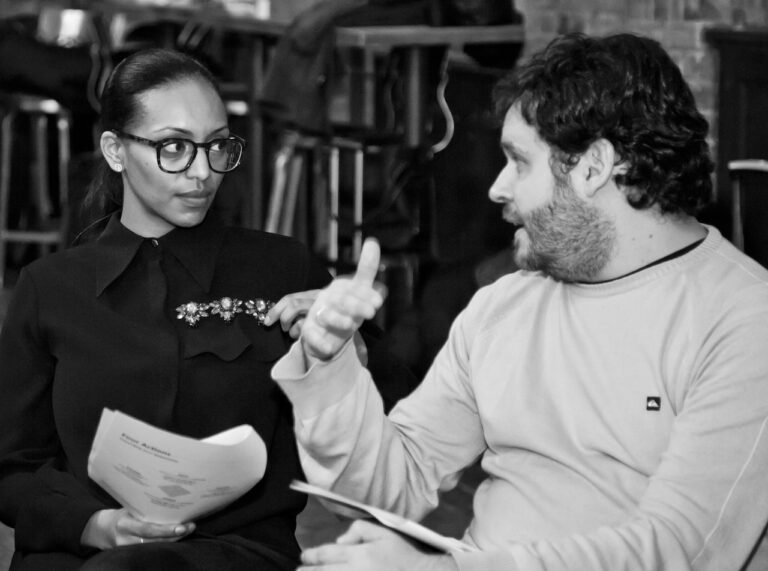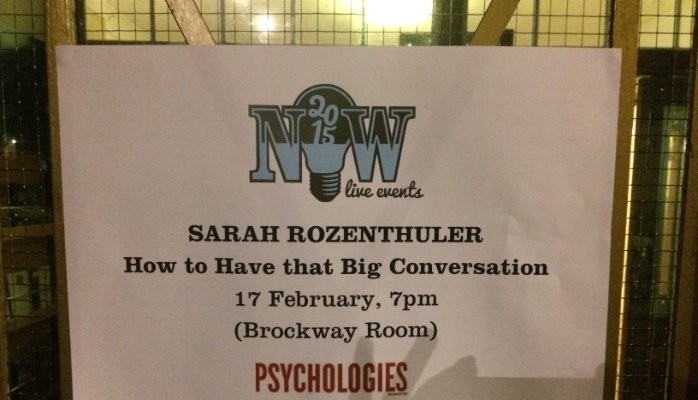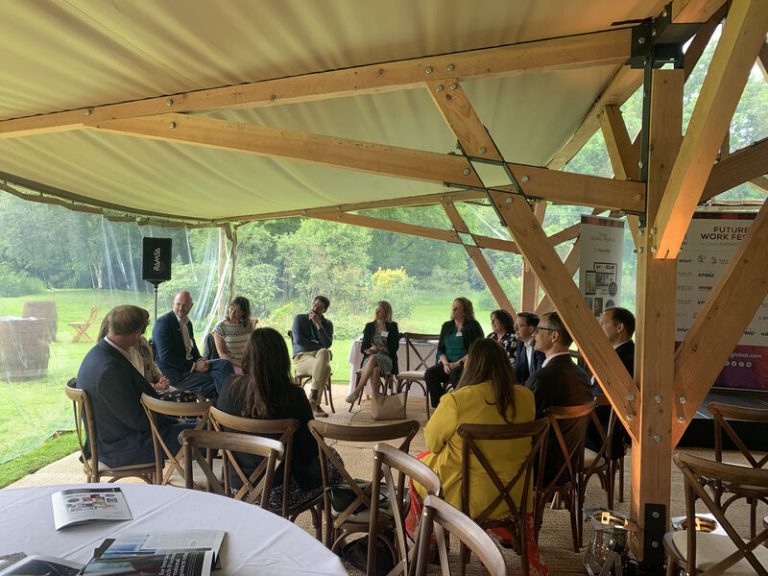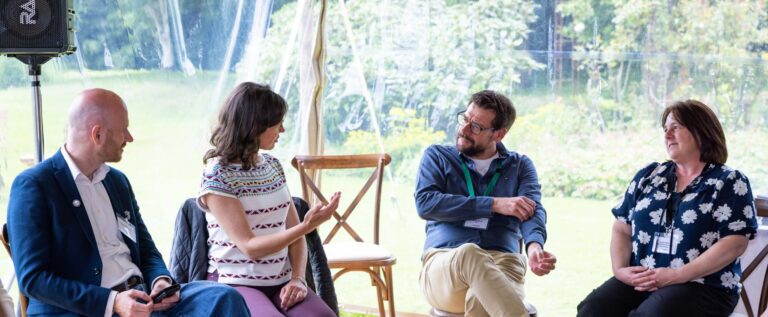
Getting to breakthrough by J. Rakowicz
How can we deliver outstanding results – something that my group, as it operates today, cannot achieve? How can we become a true team rather than a group of high performing individuals? What would it take for us to have a ‘breakthrough conversation’ and bring something new to the business?
These are questions that leaders I’ve worked with recently are asking. At the heart of the matter is the need to create a real ‘sense of team.’ As Professor Peter Hawkins said in his keynote address at the ‘Evocative Leadership: Calling forward potential’ creative dialogue hosted by nowhere (20 January 2011):
“It’s amazing how often you come across teams with an average intelligence of over 120, but the team functions at a collective intelligence of about 60.”
(Peter Senge to Peter Hawkins, personal communication)
For a group of leaders to become a true team – where the whole is truly greater than the sum of parts – they need to develop many capacities. Core to these is the ability to have robust conversations that cut through big issues to arrive at something new: an innovative idea, a novel way of working or a creative experiment. How can they do this?
The need for breakthrough conversations
Becoming a leadership team is not an easy journey. As I look across the different leadership teams I’ve worked with recently, there are several similarities. These include:
- Operating in a difficult environment where there is strong pressure to perform.
- A high degree of uncertainty, including whether the team will remain viable.
- Strained relationships between some individuals that adversely affect the overall functioning of the team.
As a result, many teams that have been around for years still operate as a group of individuals. To use a football metaphor, the players are all on the pitch but they’re not yet passing the ball to one another let alone scoring goals. Individuals are more focused on their own technique than on what the team can achieve together.
For a team to perform at its peak, the collective needs to be more than the sum of its parts. Strategic insights, operational excellence and innovative thinking only emerge if a leader is able to disrupt the pattern of individuals playing alone rather than together. This shift often calls for ‘breakthrough conversations’ to happen in the team. These are conversations that:
- Have uncomfortable moments. The ‘hard truths’ of the current reality need to be named and acknowledged before new possibilities can emerge.
- Involve grappling with big issues. People need to learn to think together to arrive at a way forward that everyone is bought into.
- Call for courage. Individuals need to be willing to speak out about disabling patterns, rigid dynamics and whatever else is getting in the way.
Superior levels of performance
Whilst breakthrough conversations might be challenging, the payoff is well worth the moments of discomfort they involve. Leadership teams who do find a way of talking about what’s ‘undiscussable’ are able to breakthrough to superior levels of performance. When the room is no longer filled with resentments and tensions, people relax and get on with their work.
One team I worked with gradually developed their ability to have breakthrough conversations over a two-year period. This leadership team arrived at the point where they advised the Board on what the best strategic way forward was. Although the Board had the formal responsibility to set the strategy, they were unable to do so because of their inability to communicate with each other. Talk in this case is anything other than ‘cheap.’ Enhanced communication can set the course for a whole organisation.
How can a team learn to have breakthrough conversations? Here are a couple of simple things a leader can do to create forward movement.
“How are you, really?”
Psychological safety is vital to a breakthrough conversation. Setting an inclusive, authentic and welcoming tone for the meeting is important, right from the start. When people meet each other as fellow human beings rather than as names in roles, a different kind of conversation becomes possible.
Asking people ‘How are you, really?’ helps them to connect – with themselves and with one another. When people speak about their present condition, including their feelings, emotions or sense of belonging in the team, the atmosphere in the room softens. When people feel listened to without judgment, they naturally start to open up. On the other hand, when difficult feelings such as resentment remain undiscussed, they fester.
If the leader of a team is willing and able to show up authentically, this opens the door for a deeper conversation. If a leader is aware, for example, that some team members feel excluded, finding a sensitive way to address this is essential. This might not be the first conversation to have at a meeting – there are often not one but several breakthrough conversations to be had. Being conscious about the sequence makes a real difference. Tackling the more difficult topics later on whilst there is still enough time to deal with any emotional fallout pays dividends.
The ‘old guard’ vs. the ‘new guard’
At several team meetings I’ve facilitated, it’s been beneficial to pay attention to how long people have worked in the organization. Bringing ‘systemic intelligence’ into the room by attending to underlying dynamics and the web of relationships across the whole team has been catalytic for the conversation.
In one large team of 26 members, acknowledging how long people had been in the organization became the turning point of a two-day retreat. Before the meeting, one team member shared:
“We’re a very diverse team – different nationalities, ages and professional backgrounds – but our biggest point of difference is between the ‘old guard’ and the ‘new guard.’ We see things in fundamentally different ways.”
Early on in the meeting I invited people to re-order their seating. The longest serving member sat at ‘one o’clock’ and the person who’d joined most recently sat at ‘twelve o’clock.’ On forming such a ‘clock face’, people become very sensitive to this ‘ordering’. One person, sat about half way around the circle, was quick to point that that between them and the next person, “There’s a 7 year gap!”
In this configuration, people find it easier to find their voice, particularly in relation to sensitive issues. Longer serving members (who are often not the most senior) have initiated ‘hot topics’ and brought healthy challenge. Their voice has carried precedence in a subtle but significant way. Newer joining members have listened intently and then responded from their perspective. When the normal patterns of how people talk are interrupted and disrupted, it can benefit the whole team.
The benefits of breakthrough conversations
Teams who are able to talk about what’s tricky have an edge over other teams. The benefits I’ve witnessed first-hand include:
- Energized people. When individuals feel ‘seen’ and listened to, they are much more willing to give of their best.
- Aligned action. When team members are able to talk about what matters most, people start to pull in the same direction.
- Better decision-making. When all the different voices are valued and respected, the best decision for everyone involved comes more clearly into view.
Becoming a team that can achieve something extraordinary does not happen overnight. It often involves confronting difficult issues along the way. The risks of staying silent are often greater than the risks of talking. To cut through to new possibilities, breakthrough conversations have a pivotal role to play.
Interested to find out more?
The next Co-Creating Change through Dialogue programme runs 17th – 18th April 2018 in central London. For more details, please email me.






